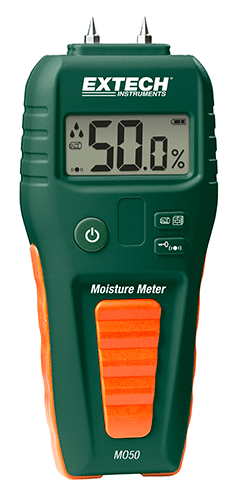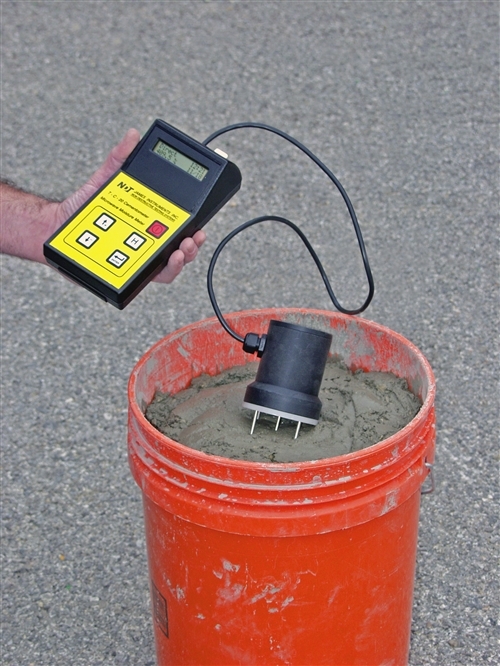Look Into the World of Moisture Meters: Everything You Need to Know
In the world of wetness meters exists a world of precision and practicality that typically goes undetected. Comprehending exactly how moisture meters run, the various types readily available, and their varied usages can lose light on their relevance in making certain quality and effectiveness.
Exactly How Moisture Meters Work
Moisture meters run by determining the electric conductivity or capacitance of products to identify the wetness material existing. These meters are vital tools throughout different markets, including woodworking, building, and agriculture. By making use of different methods such as pinless or pin-type modern technology, moisture meters provide precise analyses that help experts make informed decisions.
Pin-type dampness meters work by putting the sharp pins into the material being evaluated. On the various other hand, pinless moisture meters utilize electro-magnetic signals to scan a bigger area without causing any damage to the product's surface area.
No matter the method used, moisture meters play an important role in protecting against problems such as mold growth, architectural damage, or item issues created by excess dampness. Comprehending how these meters work is crucial for guaranteeing the top quality and stability of products in various applications.
Sorts Of Moisture Meters
Offered the crucial role dampness meters play in numerous industries, it is necessary to understand the different types readily available to specialists for accurately analyzing wetness degrees - Moisture Meter. There are mainly two major types of dampness meters: pinless and pin-type dampness meters

On the other hand, pinless dampness meters utilize electromagnetic sensor plates to scan a bigger area of the product without triggering any type of damage. This type appropriates for promptly scanning huge areas and is commonly used for floor covering, wall surfaces, and ceilings. Pinless meters are convenient for taking readings on completed surfaces without leaving any type of visible marks.
Both kinds of dampness meters have their advantages and are chosen based on the particular requirements of the job at hand. Recognizing the distinctions between these kinds is crucial for experts to make accurate wetness evaluations.
Applications Across Industries
Construction specialists count on dampness meters to examine the dampness degrees in structure products like concrete, timber, and drywall, which is vital for preserving structural integrity and stopping problems like rot Go Here or mold. The flooring industry uses dampness meters to determine the dampness material in subfloors prior to mounting numerous flooring treatments, protecting against expensive damages due to excess wetness. In the food sector, dampness meters are used to keep an eye on and control moisture levels in products such as grains, nuts, and dried out fruits to maintain quality and top quality.
Tips for Utilizing Wetness Meters
Use the wetness meter's calibration setups to ensure precise analyses when gauging the wetness content in different products. Furthermore, make sure the meter is set to the correct wetness array for the product you are measuring to obtain the most precise results.
When utilizing a pin-type dampness meter, put the pins to the appropriate depth suggested for the product being examined. This guarantees that the wetness analyses are taken from the right depth within the product, offering a more exact depiction of its wetness content. For pinless dampness meters, bear in mind to keep correct contact with the product's surface to obtain dependable readings.
Consistently check and replace the batteries in your moisture meter to avoid incorrect readings as a result of low power. Store the meter in a safe and dry place when not being used to extend its life-span and keep its accuracy. By adhering to these tips, you can take full advantage of the performance of your moisture meter and acquire specific moisture content dimensions across different materials.
Upkeep and Calibration
To make sure the precision of dampness material dimensions, regular upkeep and calibration of the dampness meter are essential action in its correct functioning. Upkeep entails maintaining the dampness meter clean and totally free from debris that could impact its readings. It is vital to comply with the maker's guidelines for cleaning up to stop damage to the tool. In addition, routine calibration is needed to verify the precision of the readings. Calibration readjusts the wetness meter to make sure that helpful site it provides constant and trusted outcomes.
Calibration should be executed periodically, particularly if the moisture meter is used frequently or in essential applications where specific dimensions are required. Several dampness meters come with calibration tools or can be calibrated by professional services. Moisture Meter. It is suggested to keep a log of calibration dates and results to track the performance of the moisture meter in time. By calibrating the dampness and keeping meter consistently, customers can rely on the precision of the wetness content dimensions acquired.
Final Thought

Finally, moisture meters play an important duty in different sectors by precisely measuring the wetness material of products. Recognizing exactly how these devices function, the various kinds useful link available, and correct maintenance and calibration are crucial for acquiring trusted results. Whether in farming, building, or production, the use of dampness meters helps make certain quality assurance and efficiency in processes.

In verdict, moisture meters play an important role in numerous sectors by properly determining the wetness material of materials.